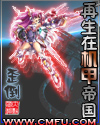再生之软件帝国-第8章
按键盘上方向键 ← 或 → 可快速上下翻页,按键盘上的 Enter 键可回到本书目录页,按键盘上方向键 ↑ 可回到本页顶部!
————未阅读完?加入书签已便下次继续阅读!
1991。
pared to modern versions of DOS version 1 was very basic, the most notable difference was the presence of just 1 directory, the root directory, on each disk。 Subdirectories were not supported until version 2。0 (March, 1983)。
MS…DOS (and PC…DOS) was the main operating system for all IBM…PC patible puters until 1995 when Windows ’95 began to take over the market, and Microsoft turned its back on MS…DOS (leaving MS…DOS 6。22 from 1993 as the last version written … although the DOS Shell in Windows ’95 calls itself MS…DOS version 7。0, and has some improved features like long filename support)。 According to Microsoft, in 1994, MS…DOS was running on some 100 million puters world…wide。
1982 … March MS…DOS 1。25, PC…DOS 1。1
1983 … March MS…DOS 2。0, PC…DOS 2。0
Introduced with the IBM XT this version included a UNIX style hierarchical sub…directory structure, and altered the way in which programs could load and access files on the disk。
1983 … May MS…DOS 2。01
1983 … October PC…DOS 2。1 (for PC Jr)。 Like the PC Jr this was not a great success and quickly disappeared from the market。
1983 … October MS…DOS 2。11
1984 … August MS…DOS 3。0, PC…DOS 3。0
Released for the IBM AT, it supported larger hard disks as well as High Density (1。2 MB) 5&;frac14;‘ floppy disks。
1985 … March MS…DOS 3。1, PC…DOS 3。1
This was the first version of DOS to provide work support, and provides some new functions to handle working。
1985 … October Version 2。25 included support for foreign character sets, and was marketed in the Far East。
1985 … November Microsoft Windows Launched。 Not really widely used until version 3, released in 1990, Windows required DOS to run and so was not a plete operating system (until Windows ’95, released on August 21, 1995)。 It merely provided a G。U。I。 similar to that of the Macintosh。, in fact so similar that Apple tried to sue Microsoft for copying the ’look and feel’ of their operating system。 This court case was not dropped until August 1997。
1985 … December MS…DOS 3。2, PC…DOS 3。2
This version was the first to support 3&;frac12;‘ disks, although only the 720KB ones。 Version 3。2 remained the standard version until 1987 when version 3。3 was released with the IBM PS/2。
1987 Microsoft Windows 2 released。 It was more popular than the original version but it was nothing special mind you, Windows 3 (see 1990) was the first really useful version。
1987 … April MS…DOS 3。3, PC…DOS 3。3
Released with the IBM PS/2 this version included support for the High Density (1。44MB) 3&;frac12;‘ disks。 It also supported hard disk partitions, splitting a hard disk into 2 or more logical drives。
1987 … April OS/2 Launched by Microsoft and IBM。 A later enhancement, OS/2 Warp provided many of the 32…bit enhancements boasted by Windows ’95 … but several years earlier, yet the product failed to dominate the market in the way Windows ’95 did 8 year later。
1987 … October/November paq DOS (CPQ…DOS) v3。31 released to cope with disk partitions >;32MB。 Used by some other OEMs, but not distributed by Microsoft。
1988 … July/August? PC…DOS 4。0, MS…DOS 4。0
Version 3。4 … 4。x are confusing due to lack of correlation between IBM &; Microsoft and also the USA &; Europe。 Several ’Internal Use only’ versions were also produced。
This version reflected increases in hardware capabilities, it supported hard drives greater than 32 MB (up to 2 GB) and also EMS memory。
This version was not properly tested and was bug ridden, causing system crashes and loss of data。 The original release was IBM’s, but Microsoft’s version 4。0 (in October) was no better and version 4。01 was released (in November) to correct this, then version 4。01a (in April 1989) as a further improvement。 However many people could not trust this and reverted to version 3。3 while they waited for the plete re…write (version 5 … 3 years later)。 Beta’s of Microsoft’s version 4。0 were apparently shipped as early as ’86 &; ’87。
1988 … November MS…DOS 4。01, PC…DOS 4。01
This corrected many of the bugs seen in version 4。0, but many users simply switched back to version 3。3 and waited for a properly re…written and fully tested version … which did not e until version 5 in June 1991。 Support for disk partitions >;32Mb。
1990 … May 22 Introduction of Windows 3。0 by Bill Gates &; Microsoft。 It is true multitasking (or pretends to be on puters less than an 80386, by operating in ’Real’ mode) system。 It maintained patibility with MS…DOS, on an 80386 it even allows such programs to multitask … which they were not designed to do。 This created a real threat to the Macintosh and despite a similar product, IBM’s OS/2, it was very successful。 Various improvements were made, versions 3。1, 3。11 … but the next major step did not e until Windows ’95 in 1995 which relied much more heavily on the features of the 80386 and provided support for 32 bit applications。
1991 … June MS…DOS 5。0, PC…DOS 5。0
In order to promote OS/2 Bill Gates took every opportunity after it’s release to say ’DOS is dead’, however the development of DOS 5。0 lead to the permanent dropping of OS/2 development。
This version, after the mess of version 4, was properly tested through the distribution of Beta versions to over 7,500 users。 This version included the ability to load device drivers and TSR programs above the 640KB boundary (into UMBs and the HMA), freeing more RAM for programs。 This version marked the end of collaboration between Microsoft and IBM on DOS。
1991 … August Linux is born with the following post to the Use Newsgroup p。os。minix:
Hello everybody out there using minix…
I’m doing a (free) operating system (just a hobby, won’t be
big and professional like gnu) for 386(486) AT clones。
The post was by a Finnish college student, Linus Torvalds, and this hobby grew from these humble beginnings into one of the most widely used UNIX…like operating systems in the world today。 It now runs on many different types of puter, including the Sun SPARC and the paq Alpha, as well as many ARM, MIPS, PowerPC and Motorola 68000 based puters。
In 1992, the GNU project (http://。gnu。org/) adopted the Linux kernel for use on GNU systems while they waited for the development of their own (Hurd) kernel to be pleted。 The GNU project’s aim is to provide a plete and free UNIX like operating system, bining the Linux or Hurd platform with the a plete suite of free software to run on it。 In order to allow it to carry the GNU name, the Linux kernel copyright was changed to the GNU Public License Agreement (http://。gnu。org/copyleft/gpl。html) on the 1st of February 1992。
1992 … April Introduction of Windows 3。1
1993 … December MS…DOS 6。0。 This included a Hard…Disk pression program called DoubleSpace, but a small puting pany called ’Stac’ claimed that DoubleSpace was partly a copy of their pression Program, Stacker。 After paying damages Microsoft withdrew DoubleSpace from MS…DOS 6。2, releasing a new program … DriveSpace … with MS…DOS version 6。22。 In operation and programming interface DriveSpace remains virtually identical to DoubleSpace。 MS…DOS 6。22 remains the last version of MS…DOS released, since Microsoft turned its efforts to Windows ’95。 Windows ’95 (and later) DOS shell reports itself as DOS 7 … and includes a few enhancements, e。g。 support for long filenames。
1994 … March 14 Linus Torvalds released version 1。0 of the Linux Kernel。
1994 … September PC…DOS 6。3 Basically the same as version 5。0 this release by IBM included more bundled software, such as Stacker (the program that caused Microsoft so much embarrassment) and anti…virus software。
1995 … March Linus released Linux Kernel v1。2。0 (Linux’95)。
1995 … August 21 'poss。 23' Windows ’95 was launched by Bill Gates &; Microsoft。 Unlike previous versions of Windows, Windows ’95 is an entire operating system … it does not rely on MS…DOS (although some remnants of the old operating system still exist)。 Windows ’95 was written specially for the 80386 and patible puters to make ’full’ use of its 32 bit processing and multitasking capabilities, and thus is much more similar to Windows NT than Windows 3。x。 Windows 95 and NT 4 are almost ind



